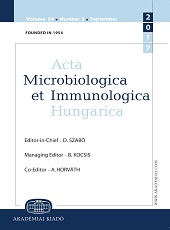Rheumatoid factor (RF) is the autoantibody that was first found in rheumatoid arthritis. It is defined as an antibody against the Fc portion of IgG and different RFs can recognize different parts of the IgG-Fc. RF and IgG join to form immune complexes that contribute to the disease process such as chronic inflammation and joint destruction at the synovium and cartilage.

Corpora arenacea are calcified structures in the pineal gland and other areas of the brain such as the choroid plexus. Older organisms have numerous corpora arenacea, whose function, if any, is unknown. Concentrations of "brain sand" increase with age, so the pineal gland becomes increasingly visible on X-rays over time, usually by the third or fourth decade. They are sometimes used as anatomical landmarks in radiological examinations.

Protein A is a 42 kDa surface protein originally found in the cell wall of the bacteria Staphylococcus aureus. It is encoded by the spa gene and its regulation is controlled by DNA topology, cellular osmolarity, and a two-component system called ArlS-ArlR. It has found use in biochemical research because of its ability to bind immunoglobulins. It is composed of five homologous Ig-binding domains that fold into a three-helix bundle. Each domain is able to bind proteins from many mammalian species, most notably IgGs. It binds the heavy chain within the Fc region of most immunoglobulins and also within the Fab region in the case of the human VH3 family. Through these interactions in serum, where IgG molecules are bound in the wrong orientation, the bacteria disrupts opsonization and phagocytosis.

Arvid Vilhelm Lindau was a Swedish pathologist and bacteriologist born in Malmö.
Acta Morphologica Neerlando-Scandinavica is an anatomical journal that was published in Utrecht, Netherlands, by Oosthoek from 1956 to 1989. It consists of volumes 1–27, and is a continuation of the earlier journal Acta Neerlandica Morphologiae normalis et pathologicae, published by Oosthoek from 1938 to 1949.
Scandinavica may refer to:

Gyula Takátsy (1914–1980), was a Hungarian medical doctor, microbiologist and inventor.
Olav Torgersen was a Norwegian pathologist.
Alsever's solution is a saline liquid used to prevent coagulation of blood. It is composed of 2.05% dextrose, 0.8% sodium citrate, 0.055% citric acid, and 0.42% sodium chloride. For usage, an equal volume of blood is gently, but thoroughly, mixed with the solution. This solution is used to study in vitro anti-inflammatory activity of crude drugs by the human red blood cell stabilization method. It is also used to preserve blood cells from other sources.
Acta Agriculturae Scandinavica. Section B. Soil and Plant Science is a peer-reviewed scientific journal published by Taylor & Francis on behalf of the Nordic Association of Agricultural Scientists. It covers environmental sciences, botany, earth sciences, physical geography, ecology, and the soil sciences of relevance to agriculture.

Preben Christian Alexander von Magnus was a Danish virologist who is known for his research on influenza, polio vaccination and monkeypox. He gave his name to the Von Magnus phenomenon.
Streptomyces albaduncus is a bacterium species from the genus of Streptomyces.

Ida Ørskov was a Danish physician and bacteriologist whose dissertation Om Klebsiella was the first scientific study pointing to the risk of bacterial cross-infection in hospitals.
Streptomyces thermodiastaticus is a bacterium species from the genus of Streptomyces. Streptomyces thermodiastaticus produces a lytic enzyme against Candida albicans.

Akadémiai Kiadó is the publishing house of the Hungarian Academy of Sciences. It is one of Hungary's most important publishers of scientific books and journals. Its majority-owner is the Amsterdam-based publishing conglomerate Wolters Kluwer, while the Hungarian Academy of Sciences holds a minority share. It was founded in 1828 and is based in Budapest. It publishes monographs and journals. The branch that publishes journals is AKJournals.

Acta Microbiologica et Immunologica Hungarica (AMIH) is a quarterly peer-reviewed scientific journal covering medical microbiology and immunology. It was established in 1954 as Acta Microbiologica Academiae Scientiarum Hungaricae, changing its name to Acta Microbiologica Hungarica in 1983, and obtaining its current title in 1994. The journal is published by Akadémiai Kiadó on behalf of the Hungarian Academy of Sciences. The editor-in-chief is Dóra Szabó.
Vilmos Kőfaragó-Gyelnik was a Hungarian botanist and lichenologist.

Satyavati Motiram Sirsat was an Indian cancer researcher.
A therapeutic interfering particle is an antiviral preparation that reduces the replication rate and pathogenesis of a particular viral infectious disease. A therapeutic interfering particle is typically a biological agent (i.e., nucleic acid) engineered from portions of the viral genome being targeted. Similar to Defective Interfering Particles (DIPs), the agent competes with the pathogen within an infected cell for critical viral replication resources, reducing the viral replication rate and resulting in reduced pathogenesis. But, in contrast to DIPs, TIPs are engineered to have an in vivo basic reproductive ratio (R0) that is greater than 1 (R0>1). The term "TIP" was first introduced in 2011 based on models of its mechanism-of-action from 2003. Given their unique R0>1 mechanism of action, TIPs exhibit high barriers to the evolution of antiviral resistance and are predicted to be resistance proof. Intervention with therapeutic interfering particles can be prophylactic (to prevent or ameliorate the effects of a future infection), or a single-administration therapeutic (to fight a disease that has already occurred, such as HIV or COVID-19). Synthetic DIPs that rely on stimulating innate antiviral immune responses (i.e., interferon) were proposed for influenza in 2008 and shown to protect mice to differing extents but are technically distinct from TIPs due to their alternate molecular mechanism of action which has not been predicted to have a similarly high barrier to resistance. Subsequent work tested the pre-clinical efficacy of TIPs against HIV, a synthetic DIP for SARS-CoV-2 (in vitro), and a TIP for SARS-CoV-2 (in vivo).
John Charles Sherris was an English-American medical doctor, pathologist, and bacteriologist. He was the president of the American Society for Microbiology (ASM) in 1983.








